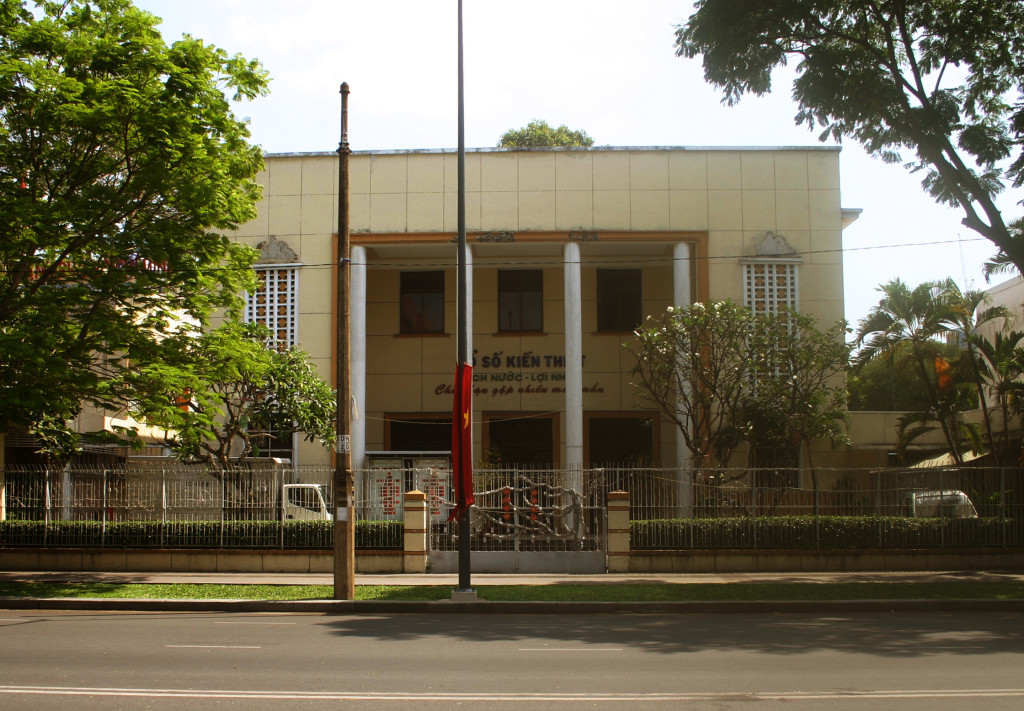
The Maison du Combattant at 23 boulevard Norodom (23 Lê Duẩn) in the early 1950s
This article was published previously in Saigoneer.
Yet another piece of old Saigon heritage faces the wrecking ball following the recent public auction and sale of the former Maison du Combattant “gold land” site at 23 Lê Duẩn.
The project to build a Maison du Combattant or War Veterans Centre was launched on 19 March 1931 by the Assemblée générale des Anciens Combattants. The land was conceded free of charge by the Governor of Cochinchina Jean Krautheimer with the approval of the Colonial Council, and construction was entrusted to the Société des Dragages, which commenced work on 22 January 1932.
Designed in art deco style, the Maison du Combattant at 23 boulevard Norodom (now 23 Lê Duẩn) was completed on 30 June 1932 and inaugurated on 14 July 1932 in the presence of the Governor of Cochinchina and the Commander General of the Cochinchine-Cambodia Division of the French armed forces.
Designed for “all victims of the Great War, without distinction of race, religion or society,” it incorporated a bar, a restaurant and meeting facilities. However, its most important facility was its auditorium, which became a popular venue for small-scale music and theatre presentations during the twilight years of French rule.
After the departure of the French in 1954, the building was sold and converted into a small theatre known as the Hý viện Thống nhất (Thống nhất Playhouse).
In the wake of Reunification in 1975 it was used for a variety of purposes until 1978, when it was taken over by the current tenant, the Kiến Thiết Lottery Company.

The old Maison du Combattant building is currently home to the Kiến Thiết Lottery Company
According to a recent article in Đàn Ông magazine, the public auction of 23 June 2015 gave the 23 Lê Duẩn site a starting price of 558 billion đồng, but Hà Nội-based real estate and luxury condominium developer Tân Hoàng Minh Trading-Service-Hotels Company (Công ty TNHH Thương mại-Dịch vụ-Khách sạn Tân Hoàng Minh) eventually saw off 12 other competitors by bidding a record amount of 1,430 billion đồng. The company plans to demolish the old Maison du Combattant building and construct in its place “commercial centres, offices and service buildings” which will be limited in height to a maximum of 100m.
UPDATE: This building was demolished in 2017
Tim Doling is the author of the guidebook Exploring Saigon-Chợ Lớn – Vanishing heritage of Hồ Chí Minh City (Nhà Xuất Bản Thế Giới, Hà Nội, 2019)
A full index of all Tim’s blog articles since November 2013 is now available here.
Join the Facebook group pages Saigon-Chợ Lớn Then & Now to see historic photographs juxtaposed with new ones taken in the same locations, and Đài Quan sát Di sản Sài Gòn – Saigon Heritage Observatory for up-to-date information on conservation issues in Saigon and Chợ Lớn.

